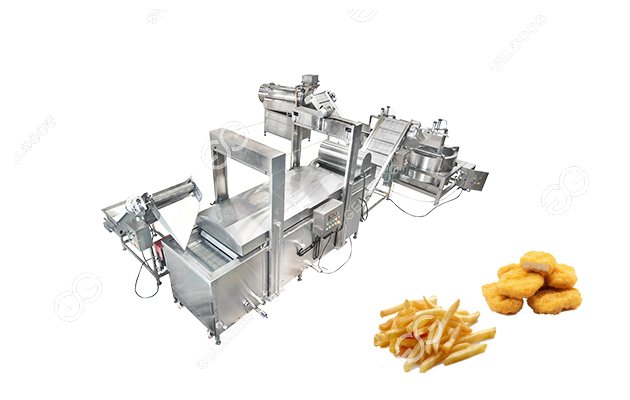What Equipment Is Used for Frying?
Frying has been a culinary technique cherished worldwide for its ability to transform raw ingredients into crispy delights. Whether it's french fries, crispy chicken, or tempura vegetables, the art of frying relies on precise equipment to achieve the perfect texture and flavor. But what equipment is used for frying? In commercial settings, various frying machines and lines are employed to meet diverse production needs, offering flexibility and efficiency. Let's delve into the essential equipment used for frying and how customized frying lines cater to specific requirements.
Fryers:
Fryers are the cornerstone of any frying operation, offering controlled heat and oil management for consistent results. These machines come in various types, including:
Open fryers: Ideal for frying large quantities of food, open fryers feature a spacious vat where items are submerged in hot oil. They are commonly used in restaurants and fast-food chains for items like french fries and chicken.
Pressure fryers: Employing pressure to seal in moisture and speed up cooking, pressure fryers are popular for preparing crispy chicken and other breaded items. They ensure faster cooking times and juicier results.
Deep fryers: With a focus on versatility, deep fryers come in countertop or floor-standing models, catering to different kitchen sizes and production capacities. They are suitable for a wide range of foods, from doughnuts to seafood.
Ventless fryers: Designed for compact spaces or locations without traditional ventilation systems, ventless fryers use advanced filtration technology to minimize odors and grease emissions, making them suitable for small restaurants, food trucks, and concession stands.
Filtration systems:
Maintaining the quality of frying oil is essential for consistent flavor and texture. Filtration systems remove impurities and extend the lifespan of oil, reducing costs and ensuring food safety. Some fryers come equipped with built-in filtration systems, while standalone units are available for larger operations.
Conveyor systems:
In high-volume frying environments, conveyor systems streamline production by continuously moving food items through the frying process. These systems offer precise control over cooking times and oil temperatures, resulting in uniform product quality. They are commonly used in industrial settings for items like potato chips, snacks, and pre-cooked foods.
Customized frying lines:
Every food processing operation has unique requirements, and customized frying lines offer tailored solutions to meet specific needs. From specialized fryers to integrated cooling and packaging systems, these lines are designed to optimize efficiency and productivity. Key components of customized frying lines include:

Pre-treatment equipment:
Prepares raw ingredients for frying by washing, peeling, and cutting them into the desired shape.
Multiple frying zones: Accommodates different cooking requirements for various food items, allowing for precise control over texture and flavor.
Cooling and packaging stations: Ensures that fried products are properly cooled and packaged for distribution, maintaining freshness and quality.
The equipment used for frying plays a crucial role in delivering delicious and consistent results across various food operations. From traditional fryers to advanced conveyor systems and customized frying lines, each component contributes to efficiency, quality, and flexibility. By understanding the diverse options available, businesses can choose the right equipment to meet their frying needs and delight customers with crispy, flavorful creations.
